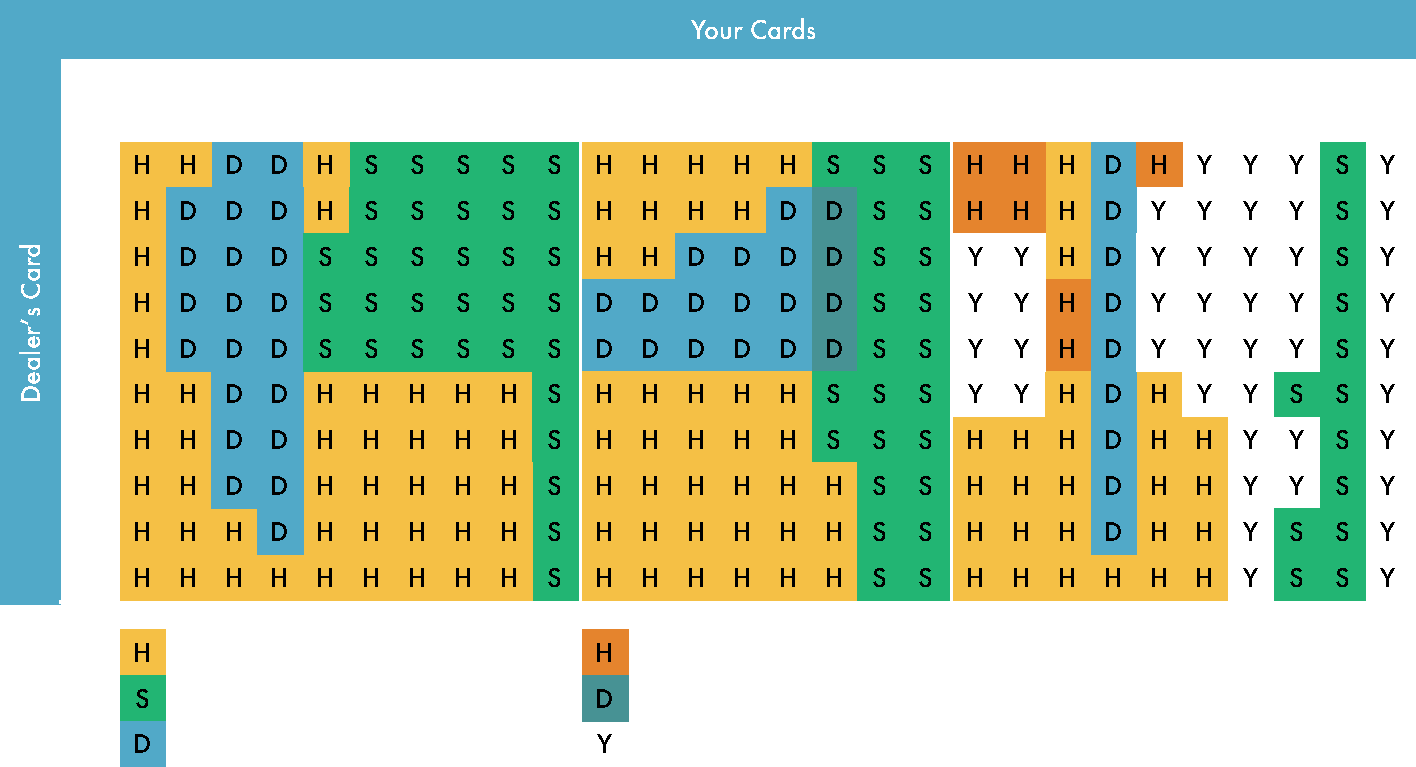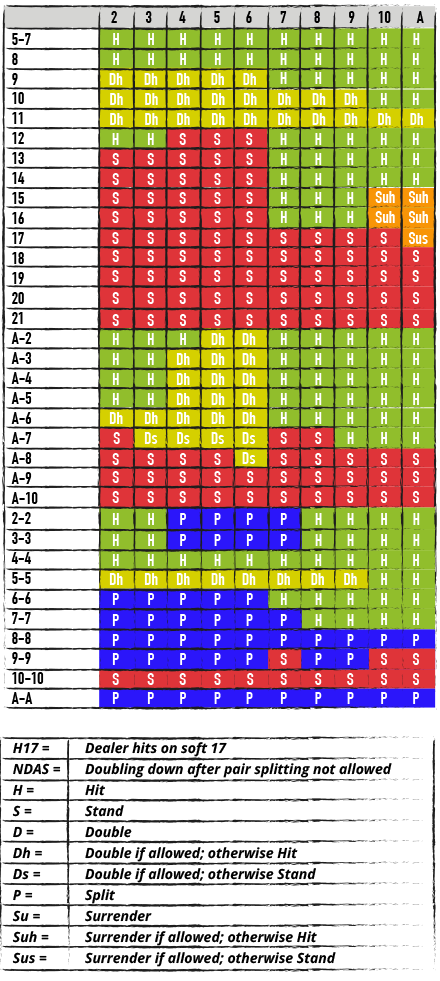Blackjack Double Deck Strategy
Posted : admin On 3/24/2022
Correct blackjack strategy changes according to the rules of the variant you’re playing. For example, when you have the option to surrender, correct play for certain hands changes. If the game you’re playing allows you to double after splitting, this changes how you play the game. This is true with each variation in the game, but it also changes when you start playing variations of blackjack like blackjack switch, pontoon, and double exposure. This page discusses the best way to study blackjack strategy, why basic strategy charts are so useful, and which keys you should be looking for when you play variants.
The differences between, for example, a 2 deck strategy chart and a 6 deck strategy chart are not enormously different, but it is important to note that blackjack is a game of small percentages that add up over time, so even the smallest rule change can make a big difference in the long run. Learn how to read a blackjack strategy chart and find examples of a 2 deck black jack strategy charts to use while playing online blackjack games. Blackjack Basic Strategy in Rules and Tips. We have talked about blackjack strategy a lot, but we believe to help you establish a foothold in the game, it would be best to break down the different stages for you, as in surrender, split and double, and specifically when to implement each one.
Blackjack Double Deck Strategy Chart
Blackjack Strategy Tables
Look online under “blackjack strategy” or “basic strategy” and you’ll find endless charts and tables you can study. To become a better blackjack gambler, find a printable basic strategy chart of the game you play and memorize that card. If you can find a basic strategy chart which is color-coded, this is even better. A good basic strategy chart should show you when to hit, stand, split, and surrender in all scenarios. This chart should show you when to double if it’s allowed.
You might think memorization is too difficult, but the rote work isn’t that hard if you’re studying for only one set of game rules. The charts discuss a couple of specific types of strategy situations. Understanding how to play your hand correctly is based on two things—what your cards are, and what the dealer’s upcard is.
Correct strategy also changes when more decks are added to the shoe. For instance, you’ll find a basic strategy chart for a single deck, a double deck, and for four or more decks at a time. The more cards are in the deck, the less useful your ability to keep track of the cards already dealt or keeping a card count of some kind. Playing with a single deck provides a positive variation instead of playing with 4, 6, or 8 decks. Even playing a single deck instead of a double deck increases your chances–but only if you know what you’re doing.

- Appendices
- Miscellaneous
- External Links
On This Page
Introduction
To use the basic strategy, look up your hand along the left vertical edge and the dealer's up card along the top. In both cases an A stands for ace. From top to bottom are the hard totals, soft totals, and splittable hands. There are two charts depending on whether the dealer hits or stands on soft 17.
Blackjack Double Deck Basic Strategy
Other basic strategy rules.
- Never take insurance or 'even money.'
- If there is no row for splitting (fives and tens), then look up your hand as a hard total (10 or 20).
- If you can't split because of a limit on re-splitting, then look up your hand as a hard total, except aces. In the extremely unlikely event you have a pair of aces you can't re-split and drawing to split aces is allowed, then double against a 5 or 6, otherwise hit.
Ideally, the basic strategy shows the play which, on average, will result in the greatest win or the least loss per initial hand played. The way I usually go about this is to look at the initial 2-card hands only. Generally, this will result in the overall best play. However, soft 18 against a dealer ace when the dealer stands on soft 17 provides the only known exception that I am aware of for any number of decks. As my blackjack appendix 9 shows, a 2-card soft 18 vs A has an expected value of hitting of -0.100359, and of standing -0.100502. So with two cards it is very slightly better to hit. However, not all soft 18's are composed of two cards. The more the cards in the player's hand the more the odds favor standing. Simulations show that if forced to always hit or always stand, it is better to stand. I would like to thank Don Schlesinger for bringing this unusual play to my attention.
Written by:Michael Shackleford